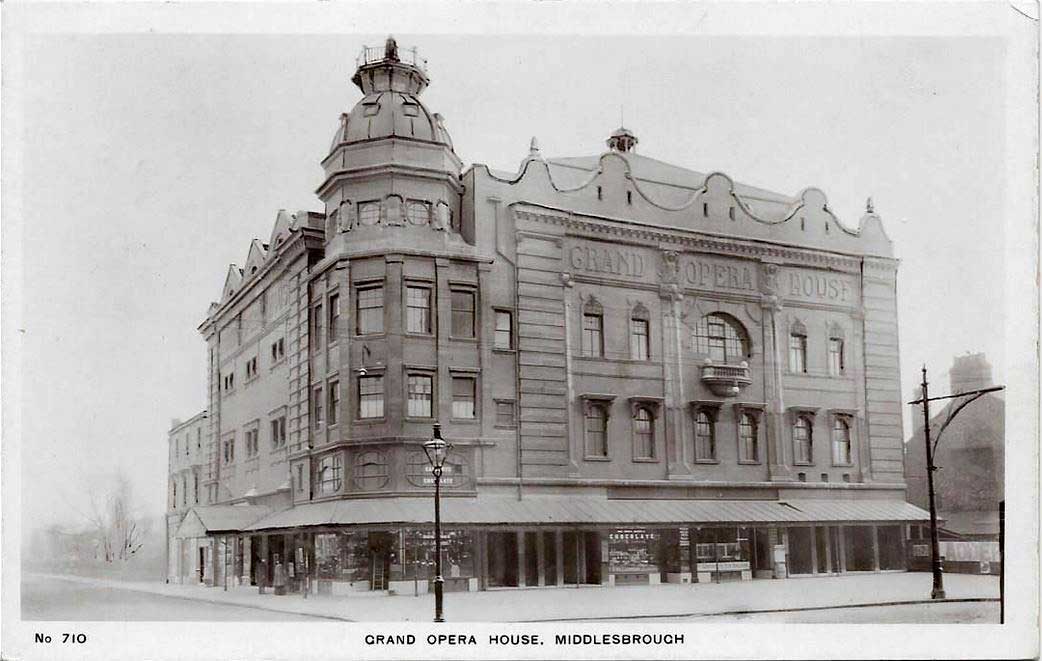Grand Old Opera House (Q33956)
From CanonBase
No description defined
| Language | Label | Description | Also known as |
|---|---|---|---|
| English | Grand Old Opera House | No description defined |
Statements
54°34'14.41996"N, 1°14'18.20810"W
0 references
STANDING proudly on the corner of Linthorpe and Southfield Roads in Middlesbrough was once the Grand Opera House opened in 1903.It was a magnificent theatre designed by Hope and Maxwell with a seating capacity for 2,600 plus standing room for 700. There was seating in the pit, orchestra stalls, dress circle, upper circle, gallery and amphitheatre plus 10 private boxes.The proscenium was 30ft wide and the stage 40ft deep. There were 12 dressing rooms.The large interior ceiling dome was supported by marble pillars. A smaller dome topped the corner entrance. In May 1914, The Grand Opera House put on a summer season of films which proved so successful it lasted until November. Live theatre returned in 1916 with an exclusive Middlesbrough run of ''Birth of a Nation''. (English)
0 references
The theatre was taken over in 1928 by Denman/Gaumont British Theatres. They closed the theatre in 1930 and completely gutted the interior, removing all the original fixtures and fittings, ripping out the two tiers of balconies and boxes and the elaborate proscenium.In their place stood now a single circle, and the old stalls extended forward to where the old stage had been. A new auditorium featured a painting by Frank Barnes depicting Middlesbrough's industrial legacies. A projection box was fitted in the rear stalls and an organ was installed in a chamber under the stage.The theatre reopened as a cinema and was in 1937 renamed the Gaumont. The final film to be shown was "The Longest Day" and the cinema was finally closed by the Rank Organisation on February 29, 1964. The whole building was then demolished and replaced by Midland House. (English)
0 references
1903
0 references
29 February 1964
0 references
1930
ompletely gutted the interior, removing all the original fixtures and fittings, ripping out the two tiers of balconies and boxes and the elaborate proscenium.In their place stood now a single circle, and the old stalls extended forward to where the old stage had been. A new auditorium featured a painting by Frank Barnes depicting Middlesbrough's industrial legacies. A projection box was fitted in the rear stalls and an organ was installed in a chamber under the stage. (English)
0 references
1964
0 references
